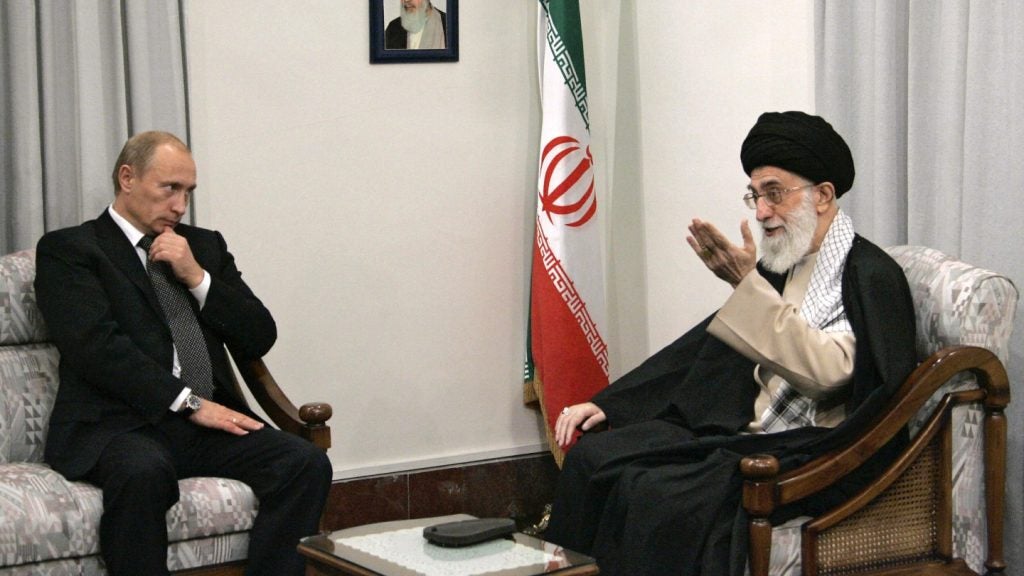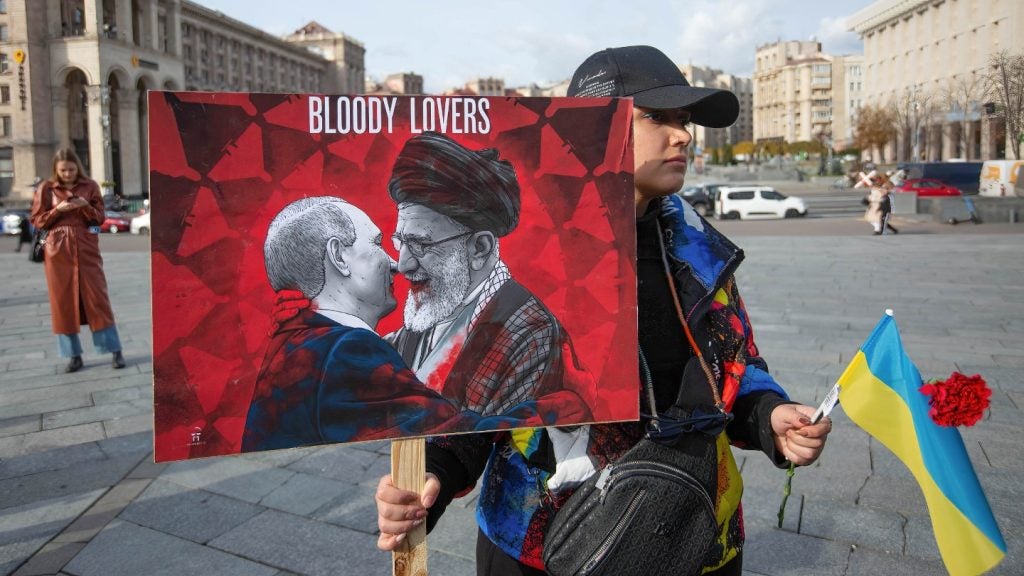When Russia invaded Ukraine in February 2022, the Kremlin quickly realised it would soon be in need of one key technology to maintain its ferocious aerial assault: drones.
Moscow cast its gaze southward across the Caspian Sea where Iran – and the en masse manufacturing of its infamous Shahed drones – lay waiting.
Shahed-136 remnants were first identified on the Ukrainian battlefield four months later and have continued to appear steadily over the following two years as Russia bombarded military, government, civilian and energy infrastructure.
Then, on Saturday (13 April), Iran launched 170 of the same Shahed drones towards Israel, as well as more than 120 ballistic missiles and 30 cruise missiles.
Iran’s first-ever direct attack on its arch-enemy was retaliation for Israel’s airstrike on the Iranian consulate in Damascus on 1 April, Tehran says, which killed several high-ranking Islamic Revolutionary Guard Corps (IRGC) officials.
Regardless, the US and Western allies condemned Iran’s attack and yesterday (17 April) announced a fresh wave of sanctions against the Gulf state’s Shahed drone programme “over the coming days”.
But even the harshest of sanctions are unlikely to contain Russia and Iran’s strengthening cooperation, according to James Marques, defence analyst at GlobalData.
“As with previous sanctions, the US and allies are trying to target Russia and Iran’s use of Western dual-use technologies in these drones,” Marques tells Army Technology. “As we've seen already, this is easier said than done.”
Iranian-manufactured drones have continued to rain down on Kyiv, Kharkiv and other key Ukrainian cities since the last volley of US sanctions in February.
Russia-Iran: an uncomfortable alliance?
Shahed drones remain the driving force behind the Moscow-Tehran alliance, propped up by Russian coin and Iranian production.
With US sanctions largely ineffective against the Russia-Iran arms pact, some onlookers had thought ideological divisions might come between the two nations, as seen with their separate spheres of influence in Syria.
Iran’s theological worldview clashes with Russia’s secularist fear of Islamist extremism, brought to the fore by the IS attack on a Moscow concert hall last month, which killed at least 137 people.
Russia is seeking to become less dependent on Iran as it aims to domestically build 6,000 Geran-2 drones by 2025 at a new factory in the Tatarstan region, albeit using Iranian designs.
Aside from propping up Russia’s war effort, this weapons pact has also had clear benefits for Iran.
Shahed-136 drones typically cost between $20,000 and $40,000 per unit. Tehran has reportedly sold more than two thousand drones to Moscow alone – therefore earning millions.
More crucially, Iran’s Shahed drone shipments have become a quid pro quo for strong diplomatic support and increasing militaristic backing from Russia as Middle Eastern tensions proliferate.
On 2 April, Russian UN envoy Dmitry Polyansky called a meeting of the UN Security Council after the Israeli airstrike on Iran’s consulate in Damascus and supported Iran’s stance that Saturday’s attack was in retaliation to this first provocation.
Some have argued that US Defence Secretary Lloyd Austin’s condemnation of Iran’s attack is hypocritical – and inconsistent with the UN’s Article 51, which stipulates member nations’ rights to “self-defence if an armed attack occurs”.
Moscow has paired pro-Iran dialogue in the UN Security Council with pledges to supply advanced fighter jets and air defence technology, long coveted by Tehran.
The urgency to receive such systems has ramped up as Iran looks to withstand Israel’s vowed retaliation, which members of Israel’s five-man war cabinet – and UK Foreign Secretary David Cameron – have said is likely to happen.
Earlier this week, the Washington Post reported that Russian arms makers had invited a delegation of Iranians to tour weapons factories that produce advanced Russian air defence systems.
These include Russia’s S-400, which military analysts have said can detect and destroy stealth fighter jets deployed by the US and Israel.
“Russia and Iran are likely to remain a mutually beneficial relationship for a while yet,” Marques tells Army Technology. “Russia has had to pay Iran for some of these drones in solid gold, as their cash reserves are low – but they already have a factory in Russia itself making them now, and they still have a lot to offer Iran material wise – fighter jets and air defence missiles mostly.”

Such a seismic shift in the Middle East’s geopolitical landscape will weigh heavily on Prime Minister Benjamin Netanyahu’s mind as he considers Israel’s response – and may have emboldened Iran to attack in the first place.
A hierarchy of alliances
Amid all the furore, Ukrainians and Gazans are looking on anxiously.
Why did the US, UK and other Western allies cooperate to fund the overnight activation of Israel’s Iron Dome defence system – with an estimated cost of NIS4-5bn (roughly $1.3bn) – but leave Ukraine comparatively susceptible to Russia’s ceaseless aerial bombardments?
While quick to condemn Iran’s attack, Ukrainian President Volodymyr Zelensky made the same point on Monday (15 April).
“Shaheds in the skies above Ukraine sound identical to those over the Middle East,” Zelensky wrote on X. “The impact of ballistic missiles, if they are not intercepted, is the same everywhere.”
As Ukraine struggles to quell Russia’s relentless attacks, outgunned and outnumbered, the sight of US and UK (and Jordanian) warplanes directly shooting down Iranian ballistics over Israel will certainly have been a sore one.
The underlying factor is that the US, UK and international coalition are far more cautious when dealing with Russia, a leading nuclear power, than Iran.
It is the same caution that has massively delayed international calls for a ceasefire in Gaza, where the conflict has passed the six-month mark. More than 33,100 Palestinians and 1,400 Israelis have been killed.
Iran and its proxies – particularly the Yemen-based Houthis responsible for dozens of attacks on ships in the Red Sea – have claimed to act in solidarity with Palestine.
In reality, their military offensives have distracted international attention away from Israel’s human rights violations and the famine in Gaza.
Russia remains the leading beneficiary. International attention has also been diverted away from Putin’s renewed efforts in Ukraine, where experts have warned Russia could clinch victory in 2024 without increased Nato support.
Shahed drones and tightening Iran-Russia relations permeate the conflict flashpoints stretching from Eastern Europe across the Middle East. It will take more than US sanctions to dent them.









